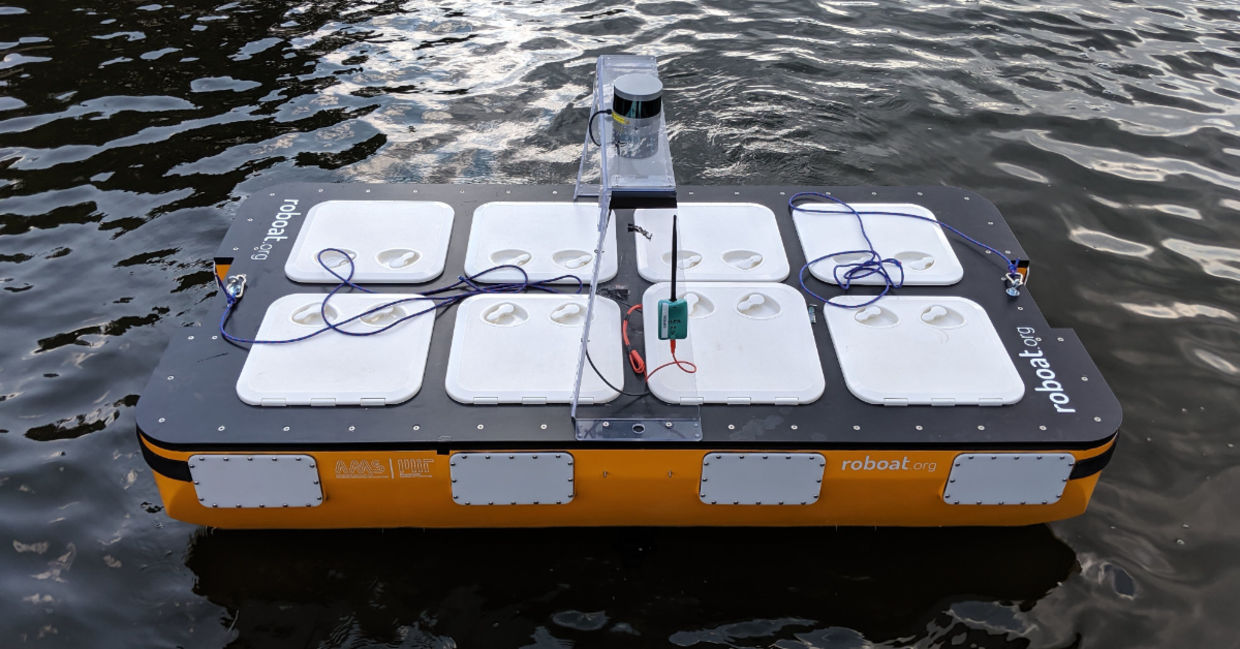
(Courtesy MIT CSAIL)
Amsterdam's picturesque canals have always been used for transportation. With more than 100 kilometers (60 miles) of waterways, it’s the perfect place to test futuristic fully autonomous electric vehicle boats.
Small autonomous prototypes or Roboats – as they are called – that are designed to do little tasks including carrying passengers and trash collection are now being trialed in Amsterdam's canals, according to AP News. This will help take the pressure off of the city's narrow streets.
The Roboat project is a collaboration from the Amsterdam Institute for Advanced Metropolitan Solutions and the Massachusetts Institute of Technology's Computer Science and Artificial Intelligence Laboratory (CSAIL) and the Senseable City Lab. The researchers are looking to develop new ways to navigate waterways without a human pilot.
The project has been five-years in the making according to a press release from MIT and has gone through three stages, a quarter scale model, half scale, and finally the full scale model that is 4 meters (13 feet) long and can carry four passengers. This is part of a larger movement to move transportation from land to sea.
Roboat: the new 1:1 scale model | Design and Technical details from AMS Institute on Vimeo.
The team also created navigation and control algorithms for the communication and collaboration of the boats and also mapped the city's canals. This is vitally necessary as Amsterdam's canals are very busy waterways that are full of private boats and tourist cruises.
Stephan van Dijk, director of innovation at the Amsterdam institute, told AP that the autonomous EV technology is “very relevant in highly complex port operations, where you have a lot of vessels and a lot of ships and a lot of quays and piers. There you can really improve the safety with autonomous systems, but also make it more efficient and into a 24/7 operations approach.”
The new prototypes have orange propellers and four thrusters that are completely powered by an electric battery. The top speed is 6 kph (4 mph) and the boats can run for 12-24 hours depending on the weight of the load.
While they are currently in the testing stage, it will be two to four years before the self-steering is perfected enough for the autonomous boats to be ready for commercial use according to the developers.
“It’s mostly because we want to be absolutely sure that we can navigate safely in the canals,” said mechatronics engineer Rens Doornbusch. “Right now we have the autonomy in place, but one of the next steps is to make sure that we can actually handle any kind of situation that we might encounter in the canals.”
While the city is supportive, there are still some legislative and privacy issues to sort out, especially since the autonomous system uses data from cameras and scanners. But these are sure to be settled and it won't be long before Roboats are being used in Amsterdam and other cities with extensive waterways.
YOU MIGHT ALSO LIKE:
Boeing First Autonomous Flying Car Has Taken Flight
This Giant Sailboat Will Transport Cars Across the Atlantic Ocean
Canada Is Adding Two Fully-Electric Ferries to Its Fleet







